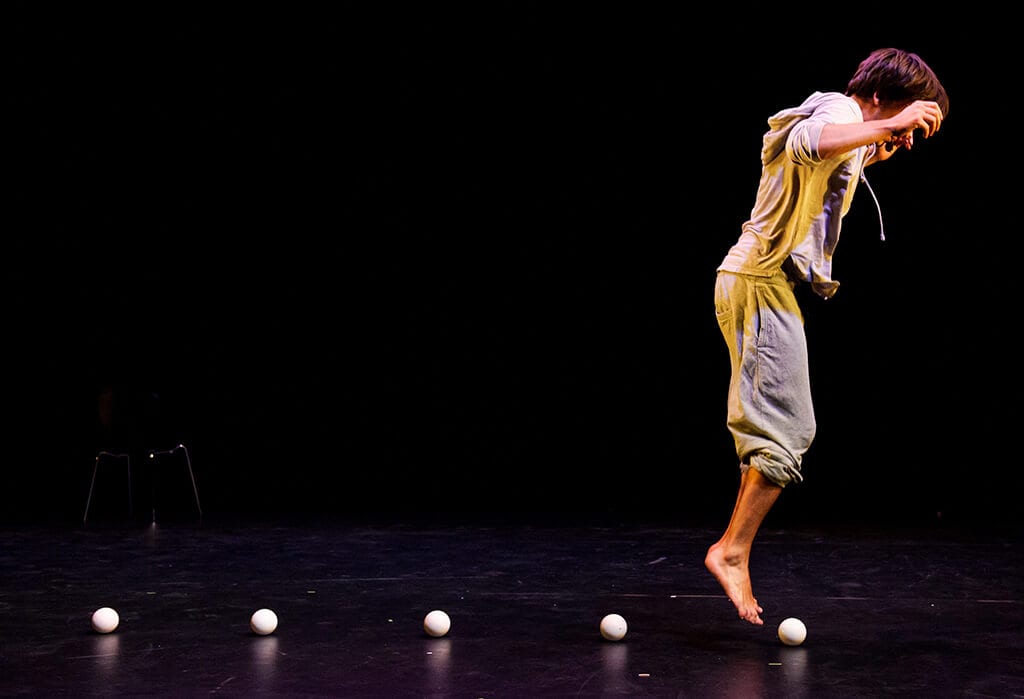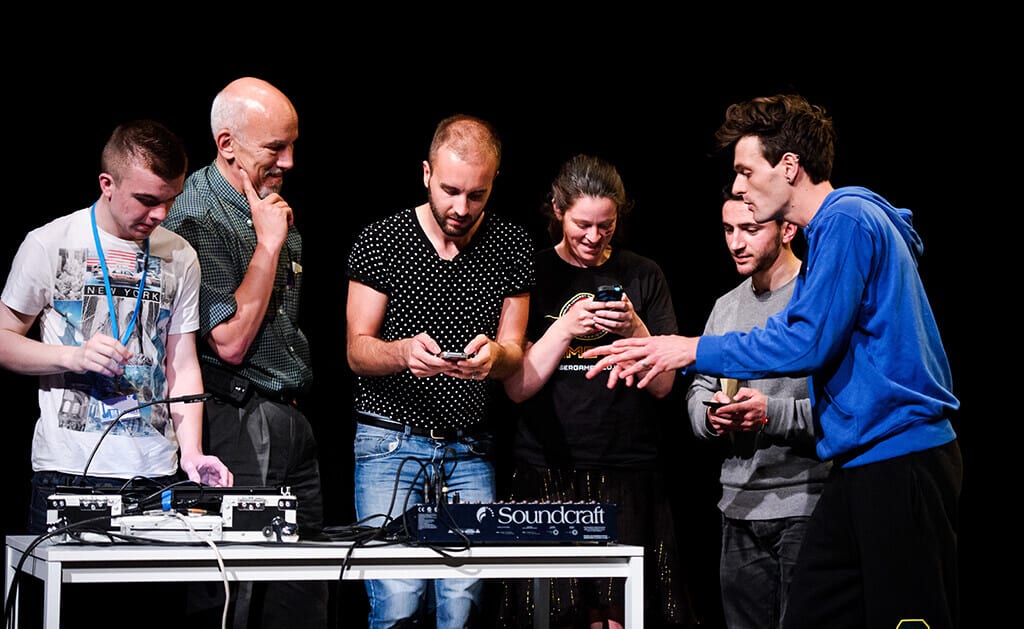BE Festival is an annual celebration of boundary pushing international work within theatre, dance, comedy, circus, music, visual and performing arts. It takes place in June at the Rep in Birmingham – and every year, in the build up, the co-directors tour a short selection of some of the most exciting work from their programme. As part of this year’s Best of BE we’re treated to three 30 minute pieces from Spain, Ireland and Italy: all equally innovative and arresting.
The first piece, #sobrejulieta, is a reimagining of Romeo and Juliet created by Madrid-based Grumelot. A projected slideshow deconstructs the heartfelt musings of solo performer Carlota Gaviño as she enacts falling in love with the audience. We’re given details of the chemical processes involved, together with French philosopher (and playwright) Alain Badiou’s reflections on the transformative nature of falling in love. Carlota’s game-playing with the audience (literally – we play “bounce the ball into the cup” with her for about five minutes…) and her naturalisation of the space (she is filmed leaving the auditorium to go and ask staff in the foyer where the nearest pub is) implicate us so that we engage with the text in personal and unexpected ways.
The second piece is by Squarehead Productions, a company based in Ireland who make work that blends circus with performance art. The Whistle is a juggling show with one performer based on a simple premise: when he blows the whistle we have to shut our eyes; when it’s blown a second time we can open them. The result is a kind of virtual reality magic lantern show. Performer Darragh McLoughlin persistently subverts the rules of the game and surprises us with his playful explorations of its boundaries.
The final piece is a definite highlight. Marco Chenevier is a choreographer, dancer, director and actor based in France, but originally from Italy. His show Quintetto is a dance piece in which none of the other dancers have turned up. Chenevier depends on the audience to bring his work to life: a short, commemorative work (celebrating the life of a famous centenarian Italian choreographer whose name escapes me…) combining conceptual dance with extracts from Blade Runner. Some of them dance, others operate the lighting and sound desk. The result is chaotic, hilarious and at times even touching – there’s something unavoidably affecting about a room full of strangers coming together in this way (however daft).
Theorists and practitioners like Jacques Rancière and the above named Alain Badiou have long been calling for new performance idioms in which spectators are transformed into active interpreters and participants. This seems to be the common connection between these pieces – and it’s vital work, both because it indicates ways in which performance can out-do competing technologies, and because it encourages direct engagement. When the prevailing mood within popular entertainment is audience passivity, work like this (for all its offbeat-ness) feels innately political: showing two fingers to established conventions and demanding on reinstating the direct relationship between performer and spectator that makes the performing arts so unique.



